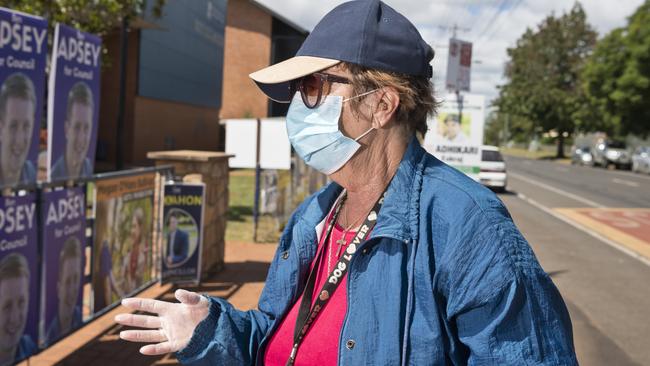Expected spike in COVID-19 cases after the Qld local government elections fails to materialise
Concerns among sections of the medical community of a big spike in cases of the pandemic coronavirus after the March 28 local government elections have been allayed.
QLD News
Don't miss out on the headlines from QLD News. Followed categories will be added to My News.
Eleven days after the Queensland local government elections, the growth rate of pandemic coronavirus in the state continues to slow, hosing down fears within some sections of the medical community of a big spike in numbers as a result of the poll.
But concerns remain about the possibility of community transmission of the virus by people who are asymptomatic.
Queensland cases of the novel coronavirus have grown by about 50 per cent since the March 28 poll, rising from 625 to 943.
That compares to a jump of 701 per cent in the 11 days before the election, skyrocketing from 78 to 625.
COVID-19 POSITIVE MUM DELIVERS HEALTHY BABY
BRISBANE NURSE TESTS POSITIVE TO COVID-19

Case numbers rose overnight by just nine, an increase of less than one per cent – clear evidence the growth rate of the virus in the state is flattening.
University of Queensland virologist Ian Mackay said because the average time between becoming infected with the virus and symptoms appearing was five to six days, Queensland had “now passed the most likely period when any splurge of cases arising from the council elections would have appeared”.
Although the incubation period ranges from between one to 14 days, most cases linked to the elections should have emerged by now.
Associate Professor Mackay said the large pre-poll vote, reducing the numbers of people fronting up on polling day, physical distancing measures and what appeared to be “very low” levels of community transmission of the virus in Queensland, combined to prevent a “worst-case scenario of increased spread”.
However, Professor Mackay cautioned Queenslanders that it was impossible to know how many asymptomatic infections were occurring in the community.
Of the 3.3 million Queensland voters eligible to vote on March 28, about 750,000 lodged a vote on polling day.
An Electoral Commission of Queensland spokeswoman said another 1.2 million attended early voting centres around the state before election day and about 570,000 postal ballots were distributed. Another 34,000 people cast a telephone vote.
The state’s Chief Health Officer Jeannette Young had given advice to the Queensland Government that the election was safe to go ahead, advising people to maintain a 1.5m distance in polling queues and to take their own pens.


